Keto-enol tautomerism is observed in :
(i) a.PhCHO , b.PhCOCH3
c. PhCOPh , d. PhCOCH2COCH3

(II) Arrange the following in the decreasing order of enol content:
(i) a.CH3COCH2CHO , b. CH3COCH3
c. CH3CHO , d. CH3COCH2COCH3
(ii) a. CH2(COOEt)2 (Diethyl malonate)
b. CH3COCH2COOEt(EAA)
c. CH3COCH2COCH3
d. PhCOCH2COCH3
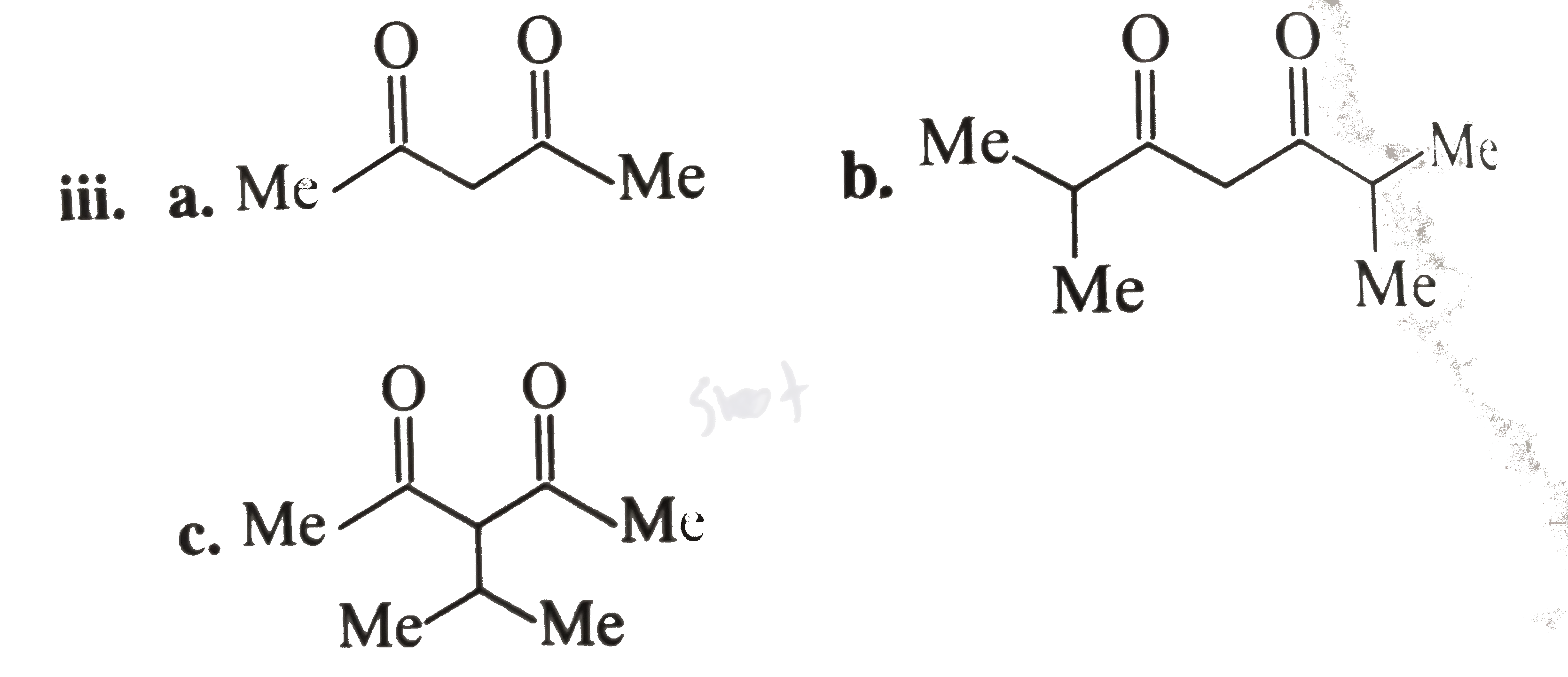
(III) Give the decreasing order of enol content of ethyl acetoacetate in the following solvents:
a. Water b. Methanol
c. Benzene d. Acetone
Video Solution
Text Solution
(I) (i),(b,d)
(a) and (c ) do not have α−H atom, so they do not show tautomerism.
(ii) (a,c,d)
(b) does not show tautomerism, since two double bonds would be in cumulative position, which is unstable. C−2 is sp-hybridised and the linear structural unit cannot be bridged with only two C atoms but can be bridge with four C atoms and hence it does not show tautomerism.
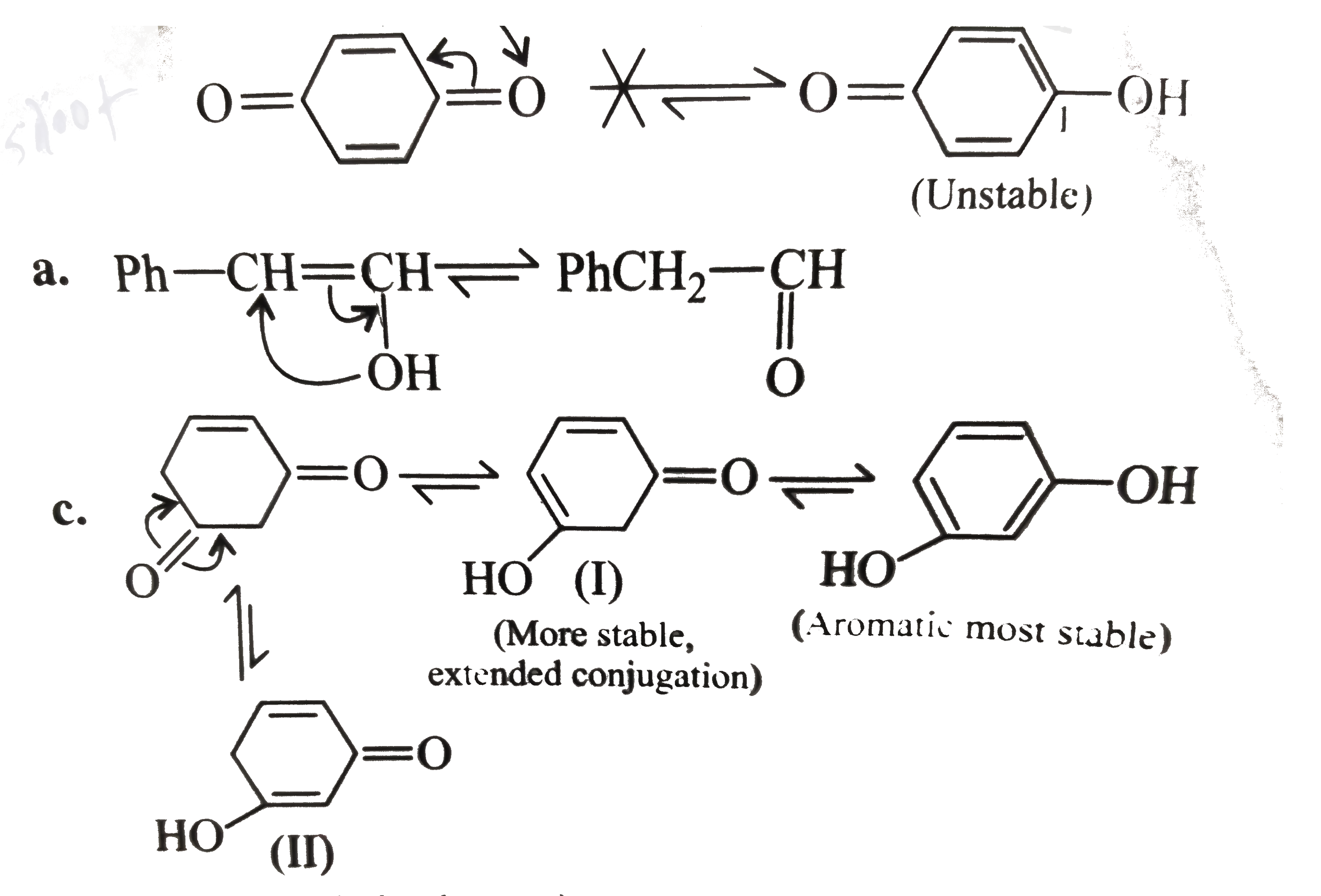
(II) I=i. d>a>b>c(diketone>Ketone-aldehyde>Ketone>aldehyde)
ii.d>c>b>a(80%>76%>7.7%>1%)(diketone with (ph) group>diketone>Keto easter>diester)

d. Esters do not show tautomerism due to cross conjugated resonance structrues, which descrease the ability of (C=O) group of easter in stabilising the enol from.
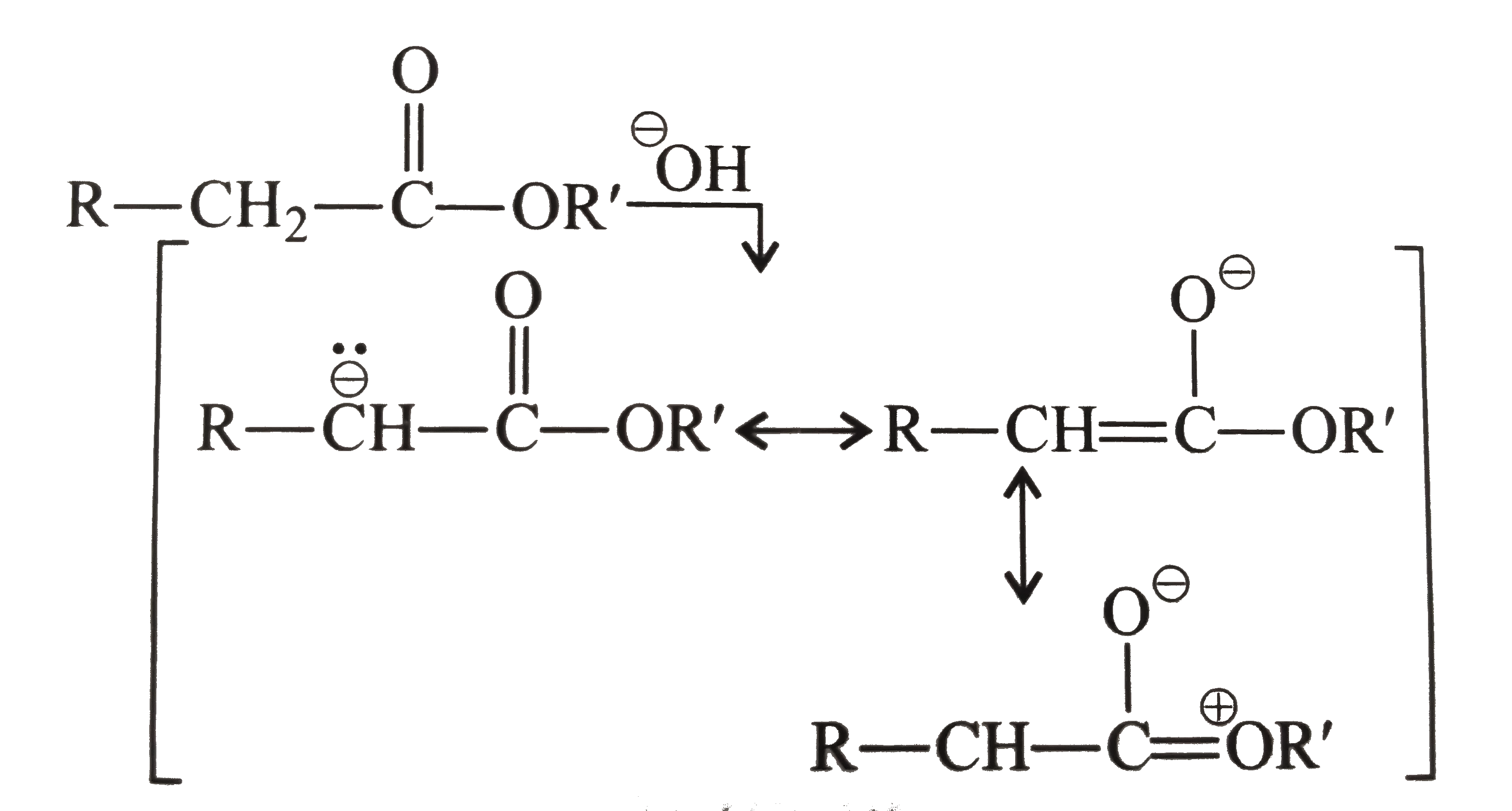
So diethyl malonate does not show tautomerism.
(iii)b>a>c
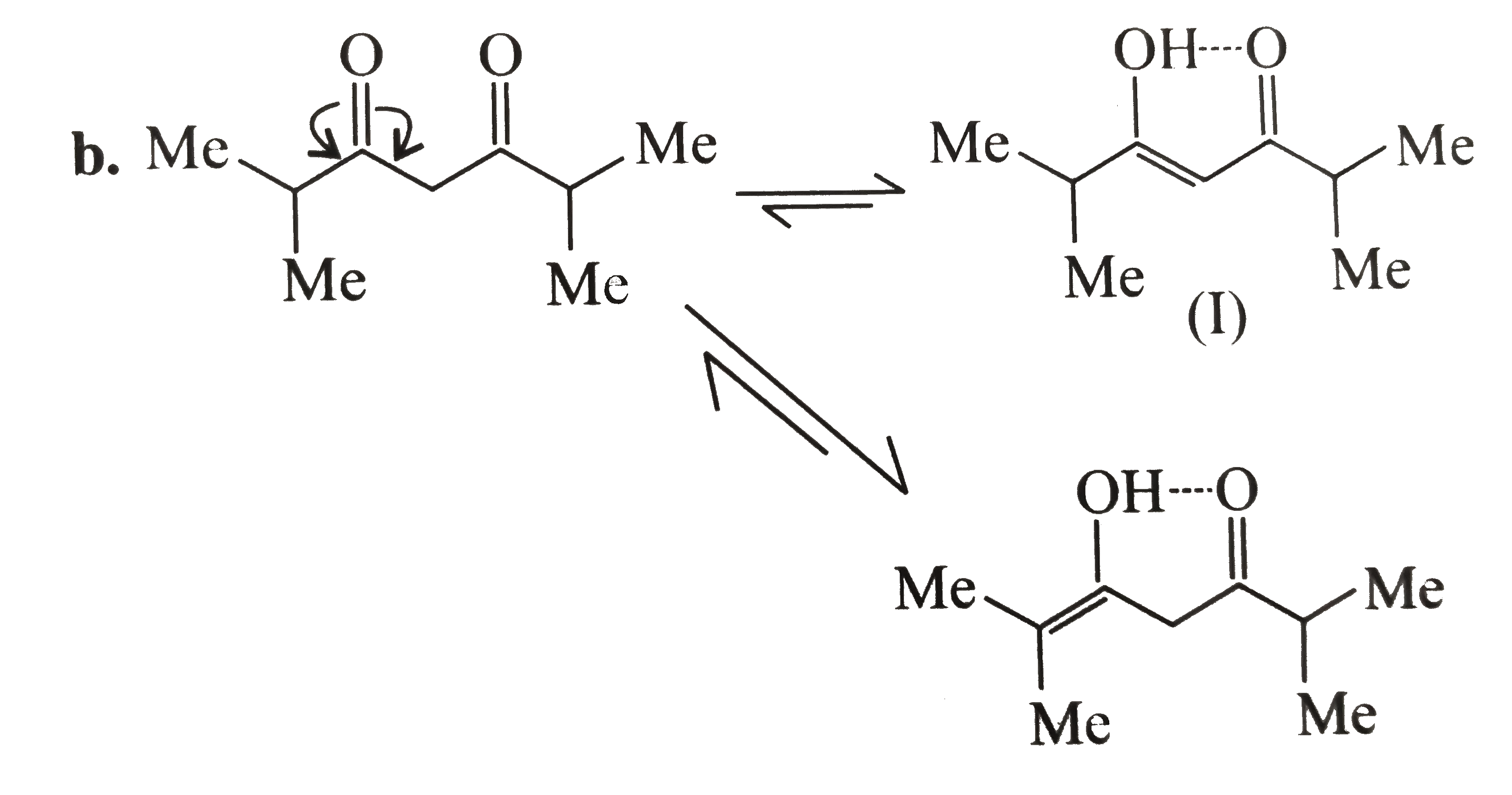
(I) is more stable than (II), since (II) is more stained 5-membered ring joining the (C==C) bond.

Both (b) and (a) are stabilised by intramolecular H-bonding. But (b) shows more enol content than (a) since (b) is more substitued alkene.
In (c ) there is only one α−H atom and its acidity is decreased by ¯e-donating (+I effect of )isopropyl group It shows less enol form.
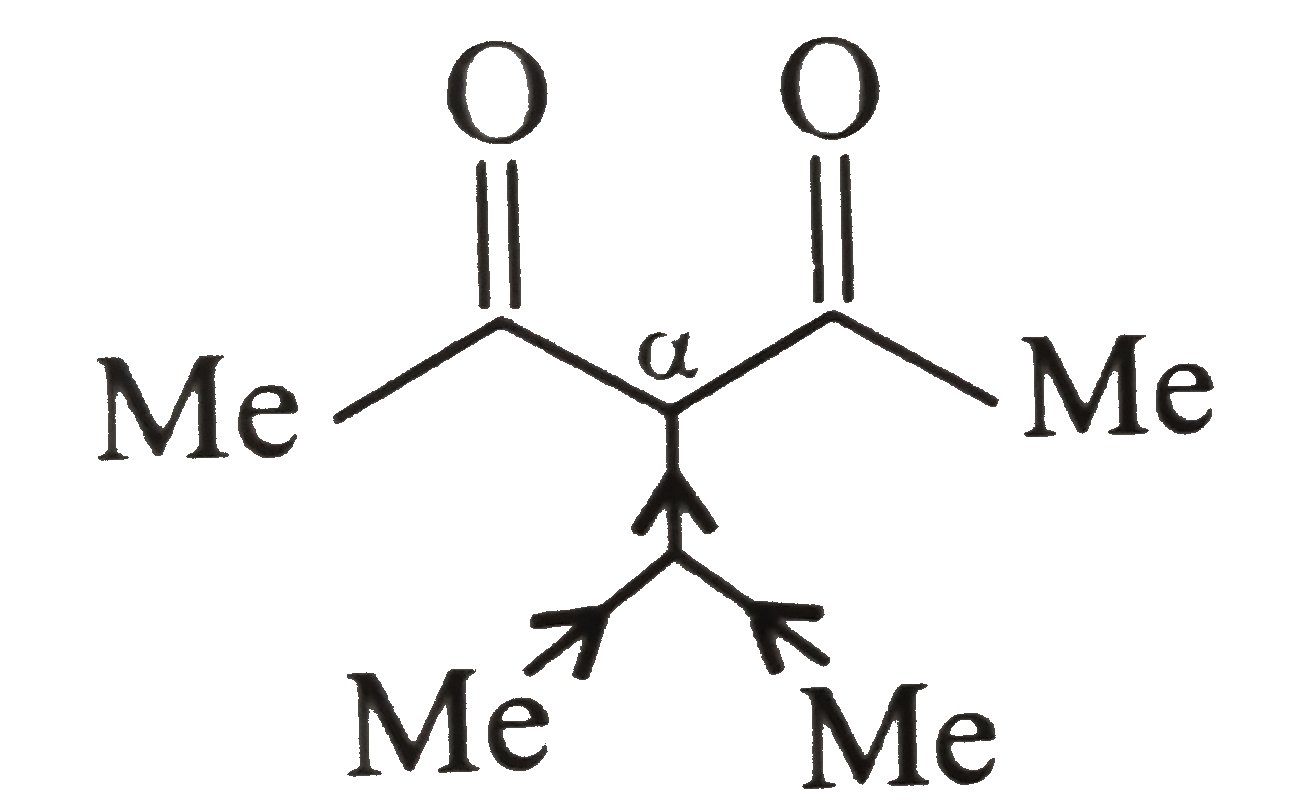
III. Effect of solvent on enol content c>d>b>a. Benzene (non-polar) > acetone (slightly polar) > methanol (polar, protic solvent) >H2O (highly polar, protic solvent)
|
Topper's Solved these Questions
- ISOMERISMBOOK - CENGAGE CHEMISTRYCHAPTER - ISOMERISMEXERCISE - Example
15 Videos
- ISOMERISMBOOK - CENGAGE CHEMISTRYCHAPTER - ISOMERISMEXERCISE - Exercise
19 Videos
- IONIC EQUILIBRIUMBOOK - CENGAGE CHEMISTRYCHAPTER - IONIC EQUILIBRIUMEXERCISE - Archives Subjective
28 Videos
- NCERT BASED EXERCISEBOOK - CENGAGE CHEMISTRYCHAPTER - NCERT BASED EXERCISEEXERCISE - Chemical Equilibrium
72 Videos
Similar Questions
Knowledge Check
Arrange the following in the increasing order of expected enol content.
i. CH3COCH2CHO
ii. CH3COCH3
iii. CH3CHO
iv. CH3COCH2COCH3Aiii<ii<ivBiii<ii<i<ivCi<iv<ii<iiiDiv<i<ii<iiiArrange the following compounds in decreasing orders of rate of hydration.
(X)CCl3CHO (Y)CH3CHO (Z)CH3COCH3 (W)CF3CHOAW gt Z gt X gt YBW gt X gt Y gt ZCW gt Y gt Z gt XDW gt Z gt Y gt XIUPAC name of CH3CH2CH2COCH3 is
A2-pentanoneBPentan-2-oneCpentanone-2Dall the above
Arrange the following in the order of their incresing reactivity towards HCN:
CH3CHO,CH3COCH3,HCHO,C2H5COCH3
View SolutionArrange the following in the order of their incresing reactivity towards HCN:
CH3CHO,CH3COCH3,HCHO,C2H5COCH3
View SolutionArrange the following in order of increasing reactivity towards nucleophilic addition reactions
C6H5COCH3,CH3CHO,CH3COCH3.
View SolutionArrange the following compounds in increasing order of their property as indicated:
(i) CH3COCH3,C6H5COCH3,CH3CHO
(ii) Cl−CH2−COOH,F−CH2−COOH,CH3−COOH (acidic character)
View SolutionIUPAC name of CH3CH2COCH3 is _________.
View Solution
